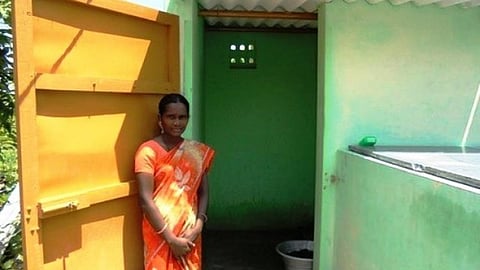
- Topics
- Feature
- Opportunities & Events
- About
- Hindi Portal
- Data
- Topics
- Feature
- Opportunities & Events
- About
- Hindi Portal
- Data

Diarrhoeal diseases are a leading cause for childhood mortality and morbidity worldwide. India registers the third highest proportion of child deaths caused by diarrhoea in South Asia [
This paper, On incidence of diarrhoea among children in India: Can the Gordian Knot of complementarities be cut? published in the Economic and Political Weekly dated May 28, 2016 informs that drinking water, sanitation and hygiene behaviour--referred to as the water, sanitation and hygiene (WASH) variables by the United Nations Children’s Emergency Fund (UNICEF)--are widely acknowledged as being the three main determinants of diarrhoeal diseases. These variables continue to show very poor results in India [
Realising this, a number of efforts are being made in India to improve sanitation coverage. For example, under the Central Rural Sanitation Programme (CRSP) of the Ministry of Rural Development in 1986, free or highly subsidised toilets were provided to households assuming that increased coverage would reduce open defecation. However, despite an investment of more than Rs 6 billion and construction of over nine million latrines in rural areas, Census 2001 found that only 22 percent of rural households in India had access to a toilet. The programme failed to motivate or sustain high levels of sanitation coverage, because of poor implementation and indifference from beneficiaries, who perceived toilet usage as not important.
Following this, The Total Sanitation Campaign (TSC) launched in April 1999, emphasised the importance of information, education and communication (IEC) over toilet construction and focused on increasing the demand among users through behavioural change. Despite these efforts, Census 2011 revealed that of the 247 million households in India, only 47 percent have their own toilet facilities and out of the remaining 53 percent, only 3 percent has access to public toilets. Half of the households have no option but to defecate in the open.
This lack of sanitation has found to increase the health burden by exposing the population to water-borne diseases such as diarrhoea that amounts to a loss of Rs 2,180 ($48) per person according to the World Bank (2011) and the Indian government continues to focus on its national effort to bring about complete sanitation coverage. Despite all this, diarrhoeal diseases have not been lowered significantly yet.
The paper points out the paradoxical situation where merely increasing the sanitation infrastructure does not guarantee a solution to the diarrhoeal morbidity and calls for a deeper analysis to understand how the WASH factors impact diarrhoeal outcomes.
The paper presents the findings of a study that looked at the data from the National Family Health Survey (NFHS) - 3 of India on WASH indicators— the presence of toilet facilities within the household premises, the source of drinking water and the hygiene behaviour and the incidence of diarrhoea among children—and examined how these factors influenced diarrhoeal outcomes.
The study classified states into three categories based on the WASH infrastructure (toilets and drinking water): Cluster 1 included states in India which are the most backward in terms of infrastructure and socioeconomic development, cluster 2 included states with mid-level infrastructure, while cluster 3 included states with relatively better WASH infrastructure and cluster 4 included small states and centrally-managed union territories.
The paper concludes by saying that targeting universal sanitation coverage done under the Swachh Bharat Abhiyan is unlikely to be effective, unless it understands the impact of complementarity of the WASH factors (interactions between the three WASH variables namely water, toilet availability and health behaviour) and their effect on the incidence of diarrhoea.
1. World Health Organisation (2015) World Health Statistics.
2. Central Bureau of Health Intelligence (2012) National Health Profile.
2. WHO/UNICEF (2014) Progress in drinking water and sanitation.
A copy of the paper can be downloaded from below: